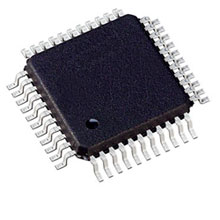From mixing iron and carbon to form superior steel, to producing 2D substances with amazing strength and conductive qualities, people have always tried to change the properties of matter to make it more conducive to demanding use. This year has seen a number of amazing discoveries in the field of Smart Materials; substances with properties that aren’t static, but that can be changed under the influence of external forces. Three of these and their wider implications are outlined in more detail below.
Self-assembling chips
 Engineers at the University of Delaware are currently exploring so-called ‘smart fluids’. These contain nano-particles that are responsive to magnetic fields and can be directed to create building blocks, organized structures, and more complex materials. It is anticipated that the main application for this would be self-assembling computer chips. These would increase production speed, and lower costs. Extremely small chips could be inserted in to any type of product, potentially enhancing them with artificial intelligence.
Engineers at the University of Delaware are currently exploring so-called ‘smart fluids’. These contain nano-particles that are responsive to magnetic fields and can be directed to create building blocks, organized structures, and more complex materials. It is anticipated that the main application for this would be self-assembling computer chips. These would increase production speed, and lower costs. Extremely small chips could be inserted in to any type of product, potentially enhancing them with artificial intelligence.
Printed lasers
Last week, the University of Cambridge unveiled their printed liquid crystal lasers. Previously, the manufacturing of these lasers, involved a laborious process in which separate liquid crystal molecules were aligned between two glass or silicon plates. The new method prints these molecules in small dots on a material prepared with a polymer solution. The resulting reaction between the liquid crystals and the polymer causes the molecules to realign and form mirrorless lasers. This means mass-produced, multi-colour liquid crystal lasers can be printed on any type of surface. Possible future applications include displays or lighting embedded in wall paper, and encoding information in “smart surfaces,” like the door of your fridge.
Spray-on batteries
Spray-on batteries are not actually a smart material, but will be a huge help in the application of other technologies, such as liquid crystal lasers. Researchers at Rice University have created a lithium-ion battery that can be sprayed like paint onto any surface, and can even be mixed with solar cells to create an automatically rechargeable battery. Combining nanotubes with traditional battery components, researchers were able to keep a series of LEDs alight for six hours, running on the current generated by paint on six bathroom tiles. In the future, there may be no more need for wires or chargers: any item could power-itself.
So what are further implications are there of technological developments like these? Most importantly, these leaps forward help to blur the boundaries between physical objects and digital information. As cloud computing begins to dominate the way in which we connect with technology and our environment, many may struggle to understand where these boundaries lie. What exactly is the difference between conversations with people in the real world, and online chatting? How can you own digital music and movies without having physical storage? But just as cloud hosting is set to become an unseen yet integral part of our everyday lives, making us more efficient and less tied to the physical, smart materials are also making objects more intelligent from the inside. Virtual and physical worlds are converging to the extent that it may soon be difficult to pin down where on ends and the other begins.

